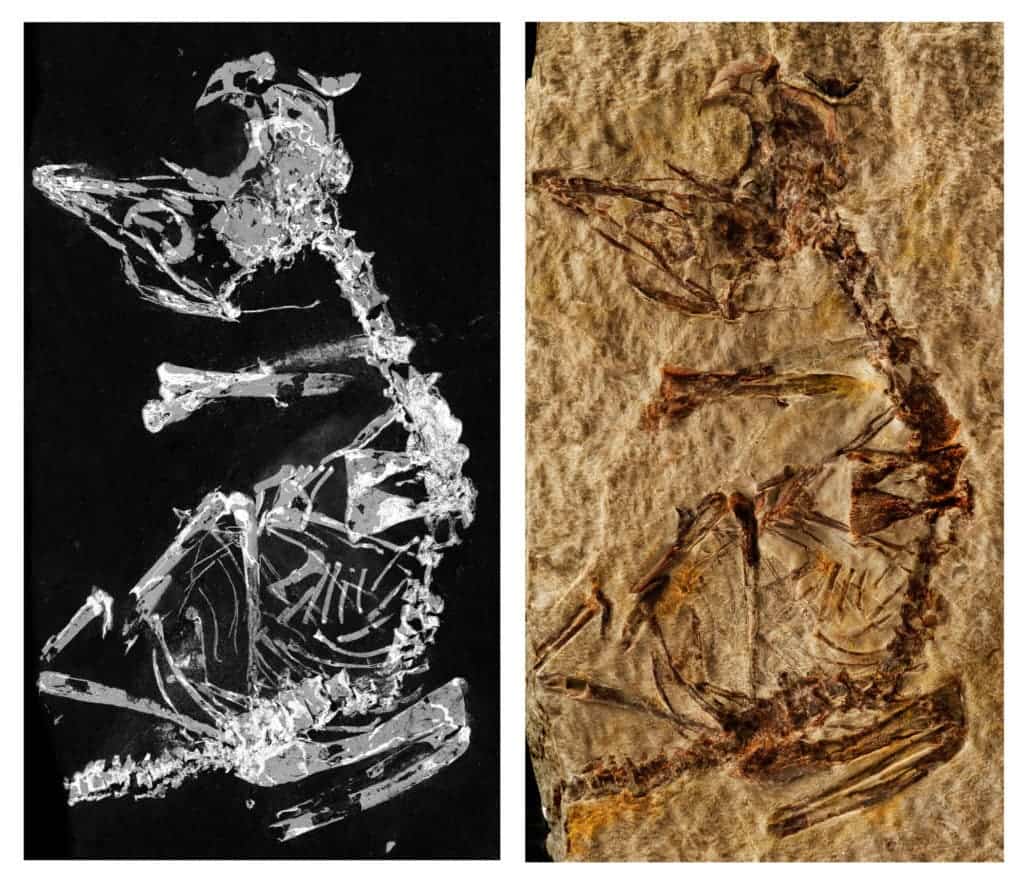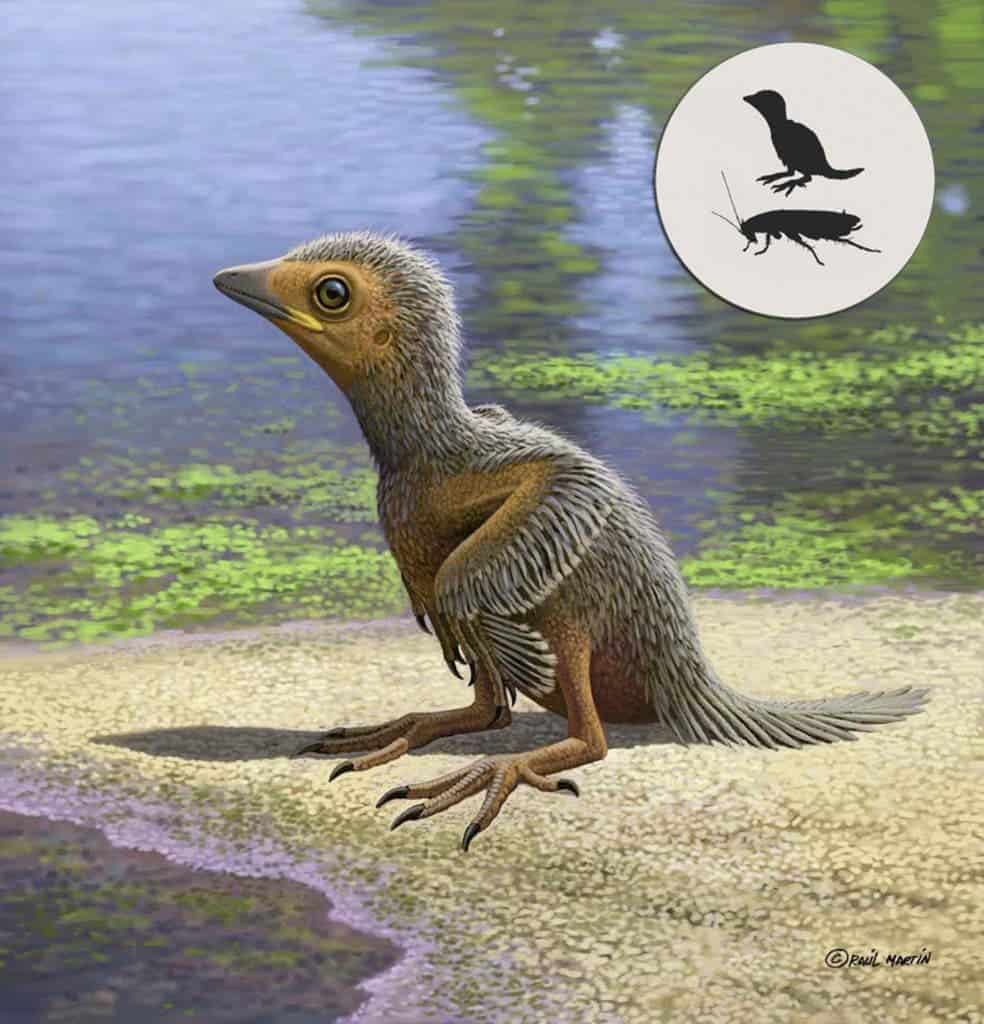A tiny, 127-million-year-old fossil, is helping paleontologists gain a new understanding of the earliest birds. The unfortunate individual — who lived for a very brief amount of time — could show us how these ancient avians came into the world of dinosaurs, and how much they depended on their parents.
Birds are a rather unusual group of animals, but they’re certainly one of the most successful in our planet’s history. It’s hard to say exactly when they emerged as a group, though paleontologists agree it was at some point in the Mesozoic (there is an ongoing debate between birds originating in the Cretaceous and the Jurassic). The well-known early Archaeopteryx dates from Jurassic rocks (about 155 million years old), but there is evidence of even earlier avians.
The early history and evolution of birds and bird-like creatures still holds plenty of mysteries. The bird fossil record is not extensive — their bones are hollow, thin, and fragile, much less likely to preserve through fossilization. This is exactly why this newly discovered fossil is so special: it’s extremely fragile, and yet it was brilliantly preserved for 127 million years ago.
Luis Chiappe, from the L.A. Museum of Natural History and the study’s co-author, explains:
This new discovery, together with others from around the world, allows us to peek into the world of ancient birds that lived during the age of dinosaurs. It is amazing to realise how many of the features we see among living birds had already been developed more than 100 million years ago.’
It measures less than five centimeters (smaller than the average small finger on the human hand) and weighs less than 85 grams (three ounces). It’s comparable in size to a cockroach. What makes it extra special is that it was fossilized not long after its birth, in a period where its skeleton was just being developed. Chiappe’s, colleague, Fabien Knoll, says that this window of time offers a unique glimpse into the early birds’ evolutionary processes.
‘The evolutionary diversification of birds has resulted in a wide range of hatchling developmental strategies and important differences in their growth rates. By analysing bone development we can look at a whole host of evolutionary traits.’
But with the fossil being so small, paleontologists had to overcome challenges. Thankfully, they now have access to an arsenal of scientific instruments, being able to analyze even extremely small features. Here, they used a method called synchrotron radiation to image the fossil at the ‘submicron’ level, observing the bones’ microstructures in extreme detail. Knoll comments:
‘New technologies are offering palaeontologists unprecedented capacities to investigate provocative fossils. Here we made the most of state-of-the-art facilities worldwide including three different synchrotrons in France, the UK and the United States.’
With this technique, the team found that the baby bird’s sternum (breastplate bone) was largely made of cartillage, and was not turned into bone yet. This means the bird wouldn’t have been able to fly, and would have likely been dependent on its parents. Some birds are like this, relying entirely on their parents to feed and care for them in their earliest days (a feature called ‘altricial’), while others, like chicken, are highly independent (something which is known as ‘precocial’). However, this isn’t a black and white thing — it’s more like a spectrum. This finding indicates that these early birds were more on the altricial side, but it also suggests that their early developmental strategies were much more diverse than we thought.
The paper ‘A diminutive perinate European Enantiornithes reveals an asynchronous ossification pattern in early birds’ is being published in Nature Communication. DOI: 10.1038/s41467-018-03295-9. Fabien Knoll et al.












